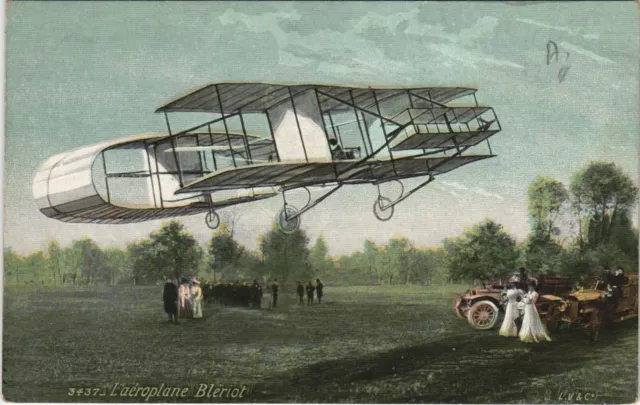During the 1950s, France developed a ring-wing fighter concept that never saw the light of day. The futuristic aircraft suffers no vortex drag.
We’ve fantasized about flying high since the Stone Age. The 1903 Wright Flyer gave wings (and an engine) to that dream and allowed humans to mimic birds. Soon, we were working and reworking early biplane designs, creating modern flying machines that served both commercial and military purposes. With advancements in engineering, history has seen some strange aircraft concepts like ring-wing planes.
The ring wing idea gained publicity when the French decided to veer off conventional fighter jet designs to gain the edge they never had in WWII. In the 1950s, France accelerated their research in VTOL technology to produce a revolutionary fighter. The growing pressure during the Cold War had European nations rushing to prepare for a possible Soviet invasion. This is how the SNECMA C.450 Coléoptère was born. The space shuttle-looking plane was a VTOL research aircraft but doubled as the base for a future fighter jet design.
Looking back at the design philosophy of the French concept of fighter aircraft reveals a more efficient path for planes.
The Decision To Invest In VTOL Aircraft
Ring wing designs were no stranger to France. The earliest ring-wing concept was a French biplane, the Blériot III and IV. The strange-looking plane failed to remain airborne and crashed during take-off attempts. The Blériot lacked a vital component of a successful design: a powerful turbojet engine. There were no further development efforts until the end of the Second World War. By 1950, nations were no longer shooting one another, and the once-weak turbojet engine came a long way.
The new goal was to develop a fighter plane that didn’t need a runway. A versatile jet that can take off and land anywhere provides a strategic advantage to Europe over the Soviets. This triggered the conception of VTOL, short for ‘vertical take-off and landing’. Before long, France teamed up with other leading aviation powers to create a swarm of angry bees that will rise vertically to meet their opponents.
The SNECMA Coléoptère Was A Budding Futuristic Fighter Jet
For France, the not-so-disappointing result of their investment in VTOL was an experimental tail-sitting aircraft dubbed “SNECMA C.450 Coléoptère”. The aircraft ticked all the boxes in theory: it was efficient, it was VTOL-capable, and it didn’t take up a lot of space. The French attempt to kill three birds with one stone is the only explanation for its weird shape.
The Coléoptère had a SNECMA Atar 101EV turbojet. If the name sounds confusing, all you need to know is that the tail-sitting aircraft was capable of producing a crazy 81,650 pounds of thrust. For comparison, the F22 Raptor only produces 35,000 lb of thrust per engine. The monster of an engine sat in the rear fuselage, surrounded by an annular wing with four fins and rudders for directional control.
The concept was a successor to the Atar Volant, which was an unmanned rig used for vertical flight trials. Yet, the Coléoptère was a step ahead of the game with its ability to transition between vertical and horizontal flight. In simpler terms, it was a fighter jet, not a rocket.
The first signs of trouble arose when the Coléoptère lifted off the ground on May 6, 1959. French engineers worked around the clock to perfect the design and orchestrated many more test flights. One issue they can’t work around was how it spun uncontrollably as it landed. This was just one entry on the long list of difficulties pilots had with gauging their distance and alignment while landing.
Tragedy struck during the 9th flight when they lost the Coléoptère in an accident during a transition flight. The funding was cut shortly afterward, although it proved that the general concept is achievable.
Even though France scrapped the Coléoptère, it had several advantages over conventional aircraft designs.
The Ring-Wing Concept Causes Less Drag And Improves Fuel Economy
Flat wings provide lift, but they also cause vortex drag. To break down vortex drag into layman’s terms: when air flows over a wing, the higher-pressure air below the wing spills over the wingtip into the lower-pressure air above. This creates a backward spiral of air (like a tornado) that is then spun by the wing’s forward motion. This spiral of air trails off the wingtip and creates a suction behind the aircraft. This isn’t enough to stop a plane, but large planes like the Boeing 747 have wings that span several meters, causing large ‘tornadoes’ of drag.
A ring-wing design is immune to vortex drag with the absence of wing tips. Within a closed-loop wing, there will be no end point for the wing tip vortices to spin off of. This meant that ring-wing planes are more efficient, allowing them to accelerate beyond Mach 2 while conserving fuel. Physics-wise, a self-propelled flying donut is more aerodynamically efficient than a bird.
Aircraft that look like donuts will reappear across history after the French VTOL fighter was buried. Another remarkable ring-wing design was the Lockheed closed-wing commercial plane concept in the 1980s. No jet-powered ring-wing aircraft has ever entered mass production due to large research and development costs associated with parting from standard airplane designs.
It is possible that sometime in the future, we may be taking off and landing in a giant donut-shaped plane. Something any historian will agree with is that flying will look completely different today if manufacturers decided to stick with the ring wing concept.
Source: hotcars.com














